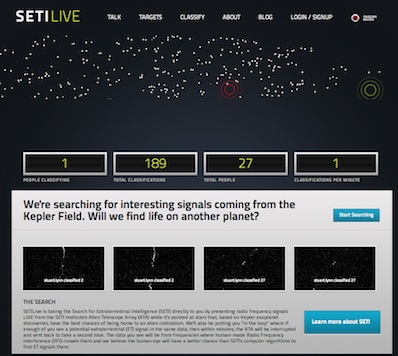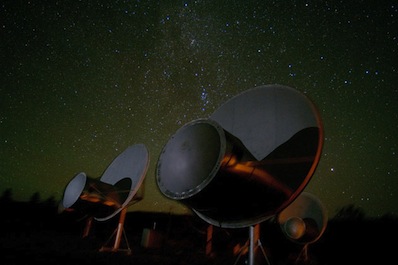


|

|
 |
|
SETI Live: join in the search for extraterrestrial life DR EMILY BALDWIN ASTRONOMY NOW Posted: 02 March 2012 Created as a result of the TED Prize Wish and in collaboration with the Zooniverse, for the first time the public can analyse data collected by the Allen Telescope Array to contribute to the search for extraterrestrial intelligence (SETI) on other planets.  Visit http://setilive.org/ to join in the search! The project was born from SETI director Jill Tarter's TED Prize Wish made in 2009, where she wished “to empower Earthlings everywhere to become active participants in the ultimate search for cosmic company.” The TED Prize was born out of the popular TED Conference series to spur global change, and the $100,000 prize has previously been awarded to Bono's ONE campaign, Jamie Oliver's Food Revolution and JR's Inside Out Project. As with other Zooniverse projects – such as Galaxy Zoo, Moon Zoo and Solar Stormwatch – SETI Live asks members of the public to analyse data to look for anything unusual that automated searches may not pick out. SETI Live is based on radio signals received by the Allen Telescope Array (ATA) in Hat Creek, California, while it is pointed at stars that have been identified by the Kepler spacecraft to host planets.  SETI Live uses data collected by the Allen Telescope Array. Image: www.seti.org. “There are frequencies that our automated signal detection systems now ignore, because there are too many signals there,” says Tarter. “Most are created by Earth’s communication and entertainment technologies, but buried within this noise, there may be a signal from a distant technology. I’m hoping that an army of volunteers can help us deal with these crowded frequency bands that confuse our machines. By doing this in real-time, we will have an opportunity to follow up immediately on what our volunteers discover.” Citizen scientists will receive parts of the data where there are so many signals that it confuses the automated search system. They will be asked to describe and classify the signals to alert scientists if a new type of signal has been detected. If enough people identify a possible extraterrestrial signal in the same data, then within minutes the ATA will be interrupted and sent back to take a second look. Join in the hunt: http://setilive.org/More about the Zooniverse: https://www.zooniverse.org/ Find out about the TED Prize: http://www.tedprize.org/ |
|
|
|
|